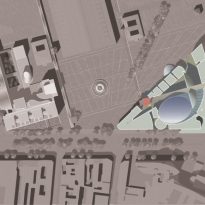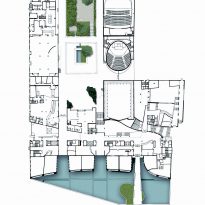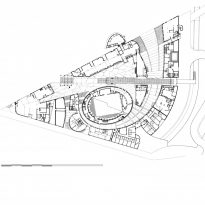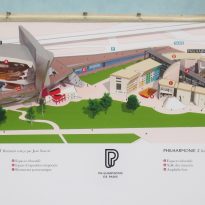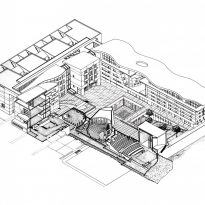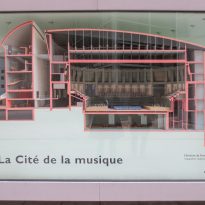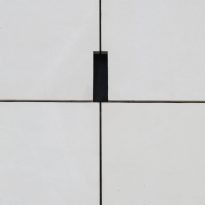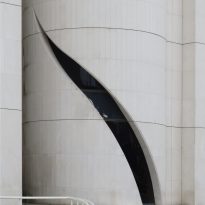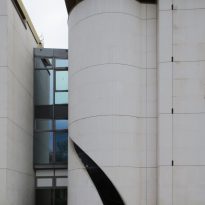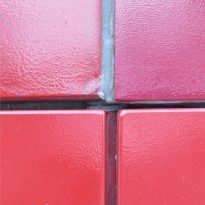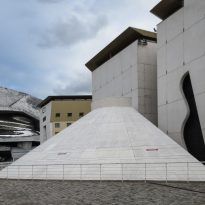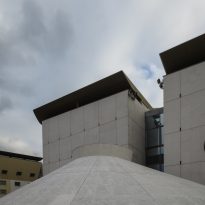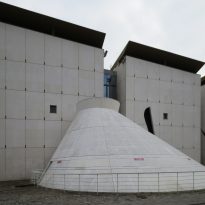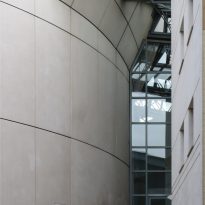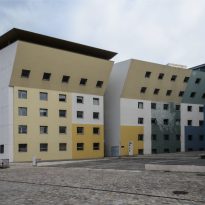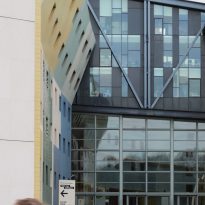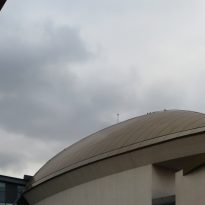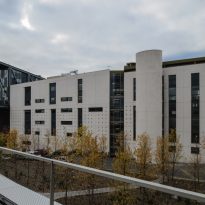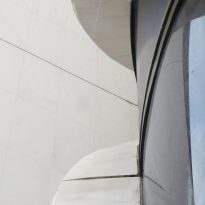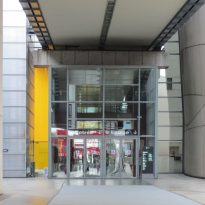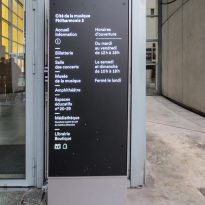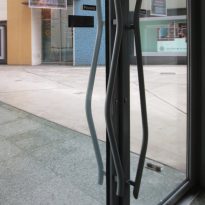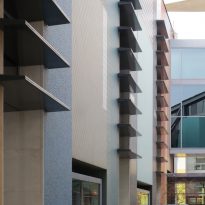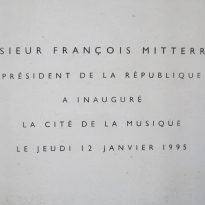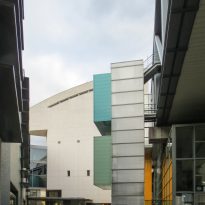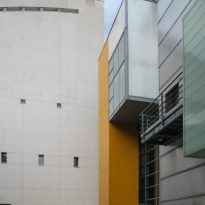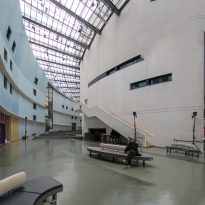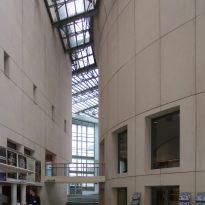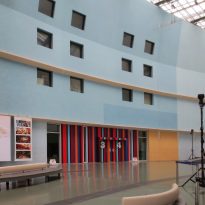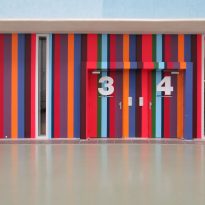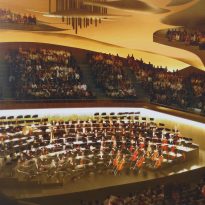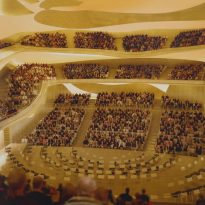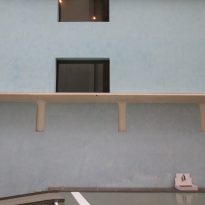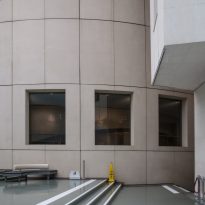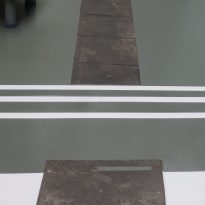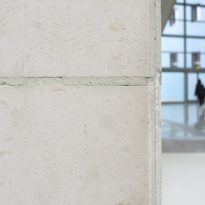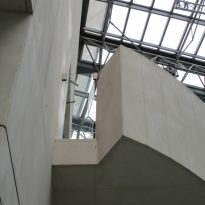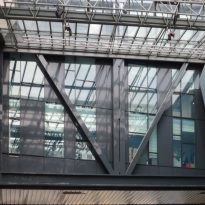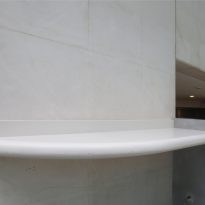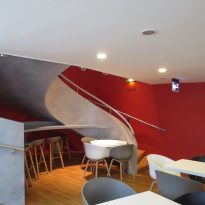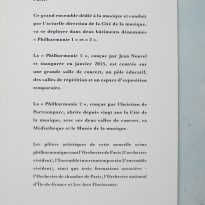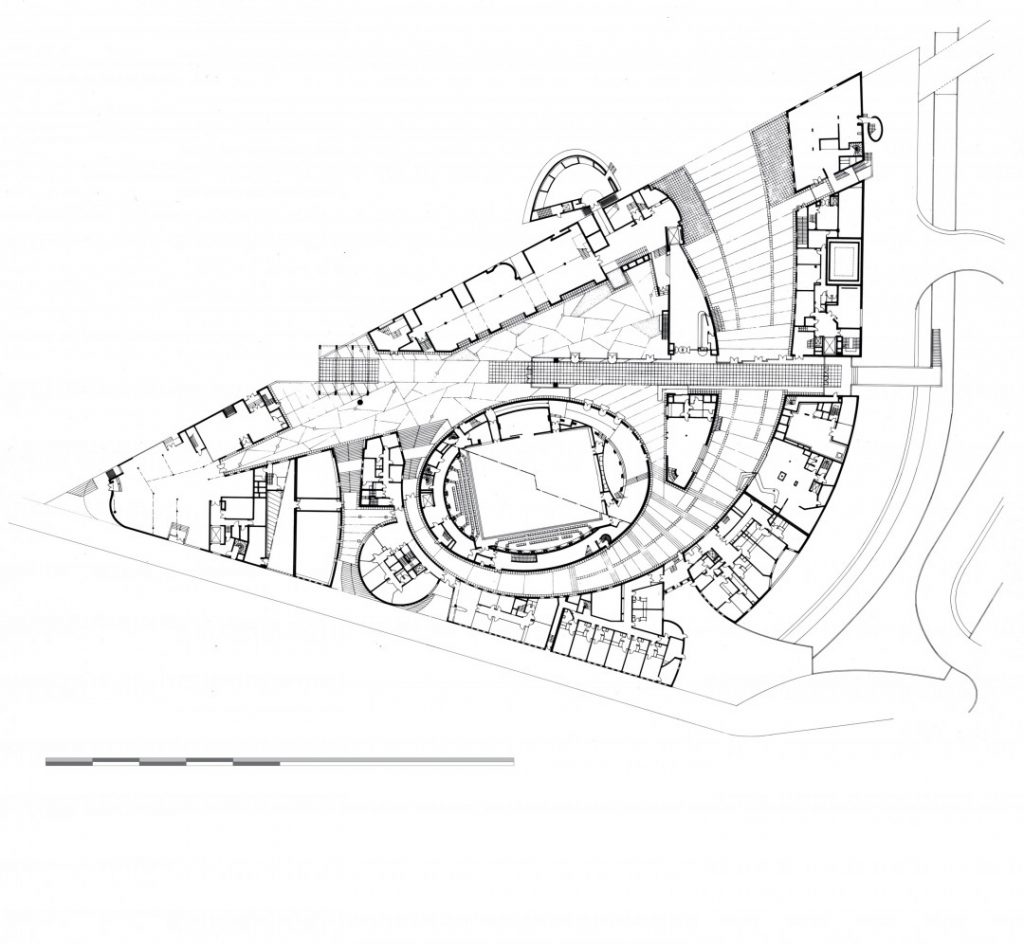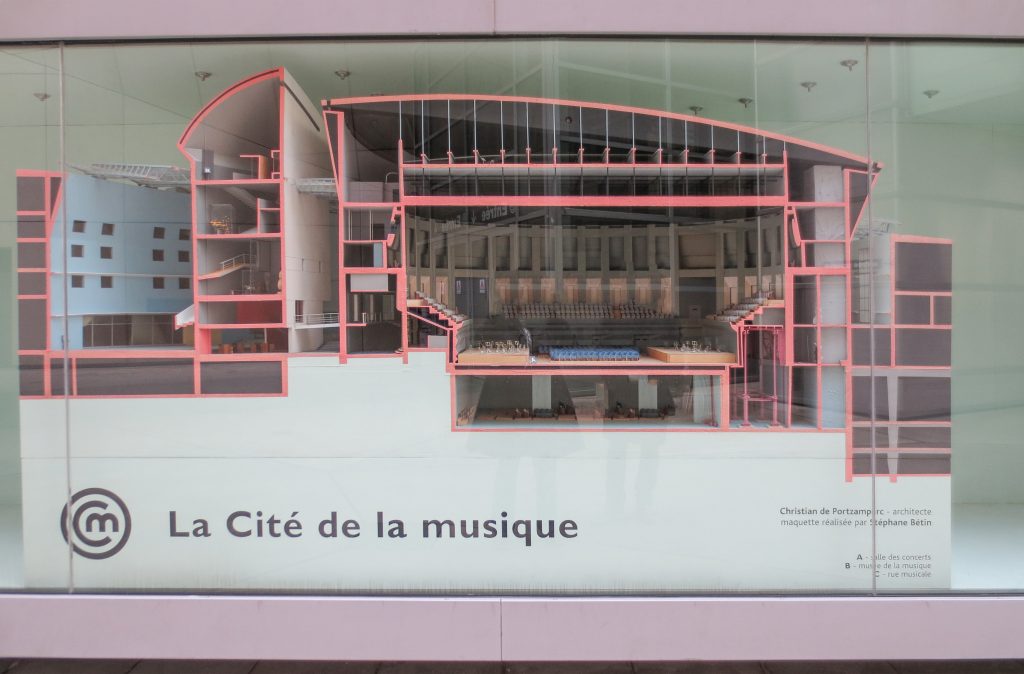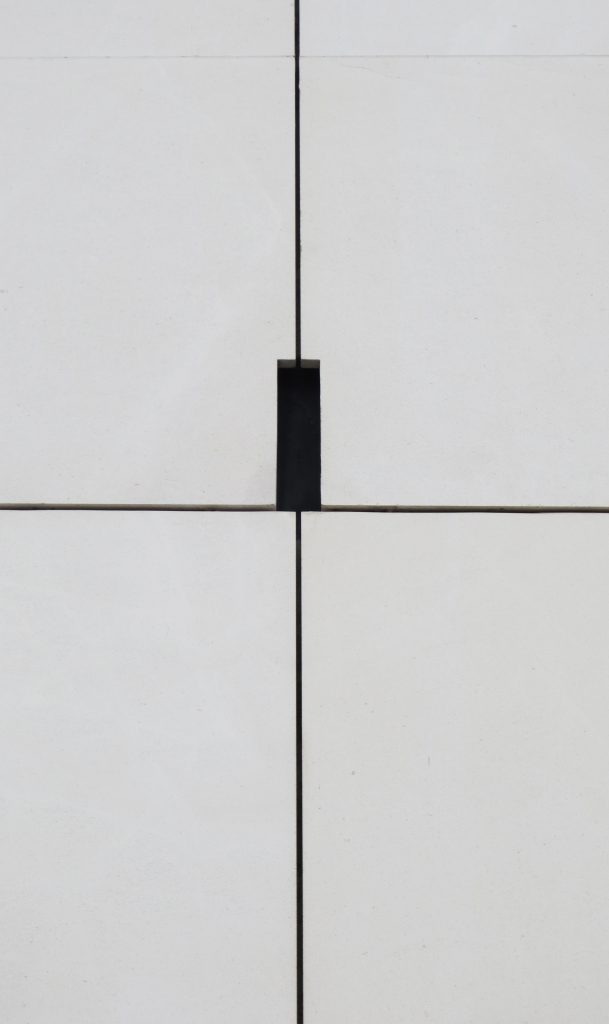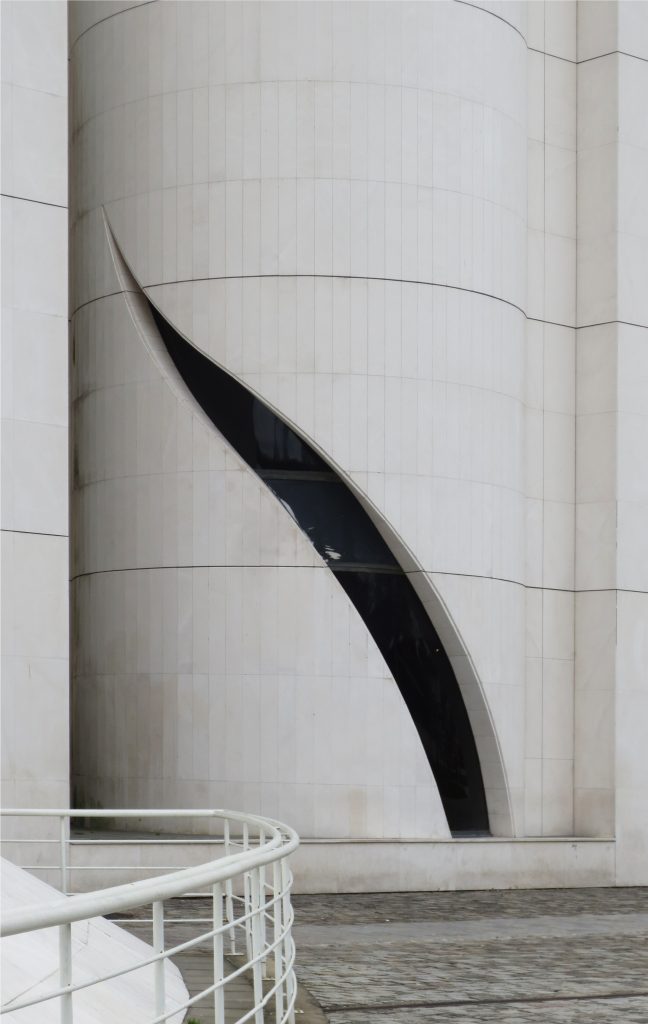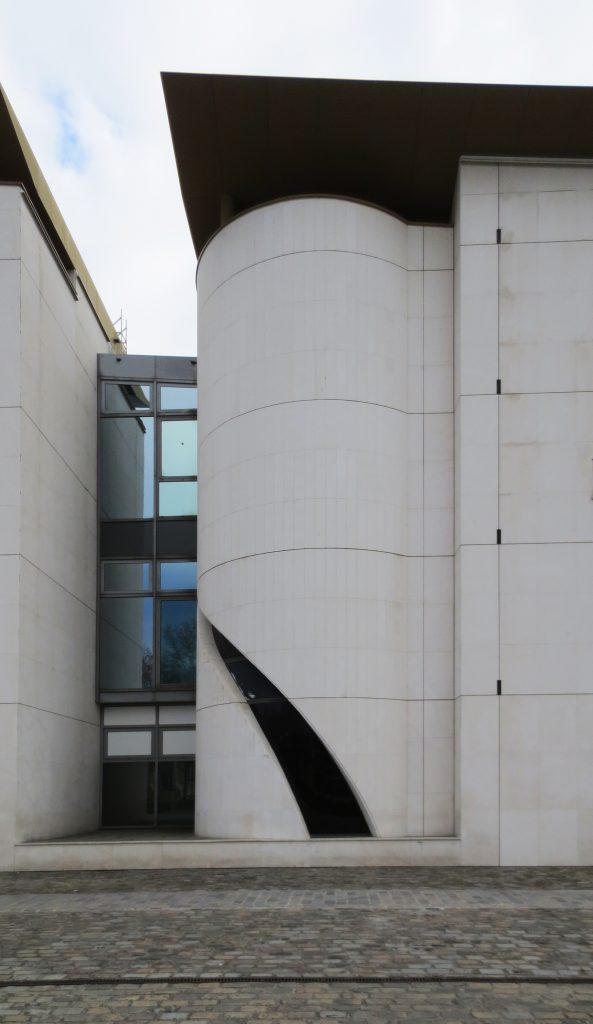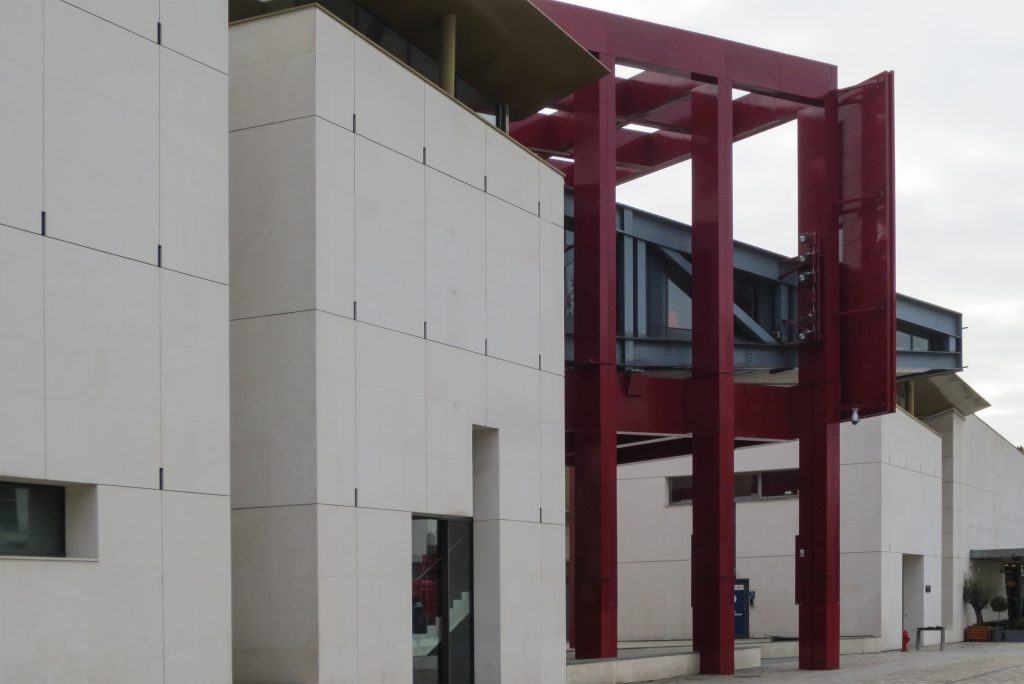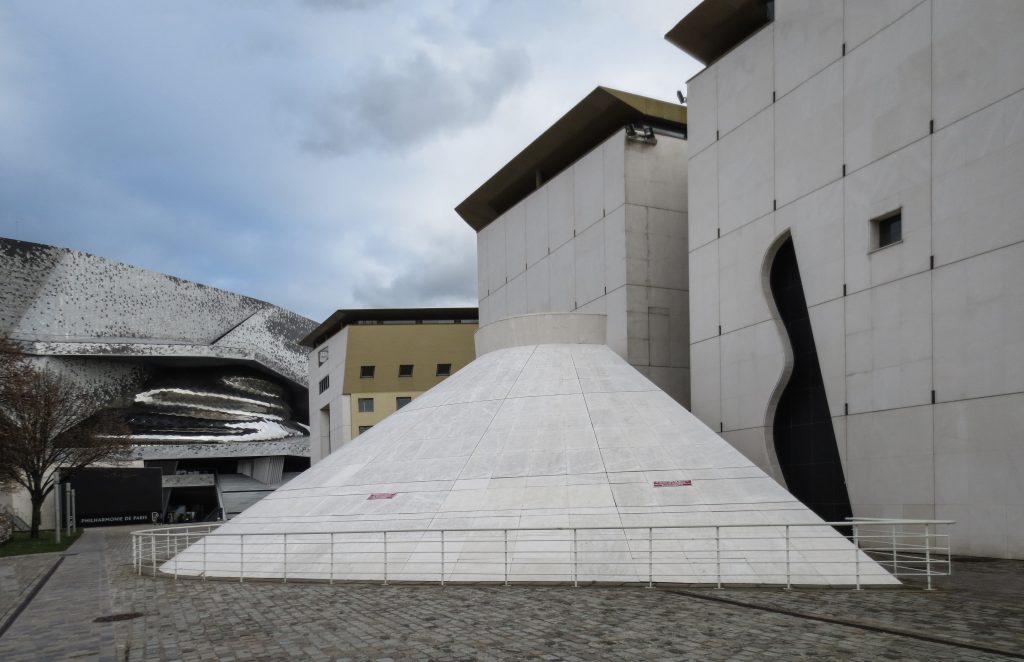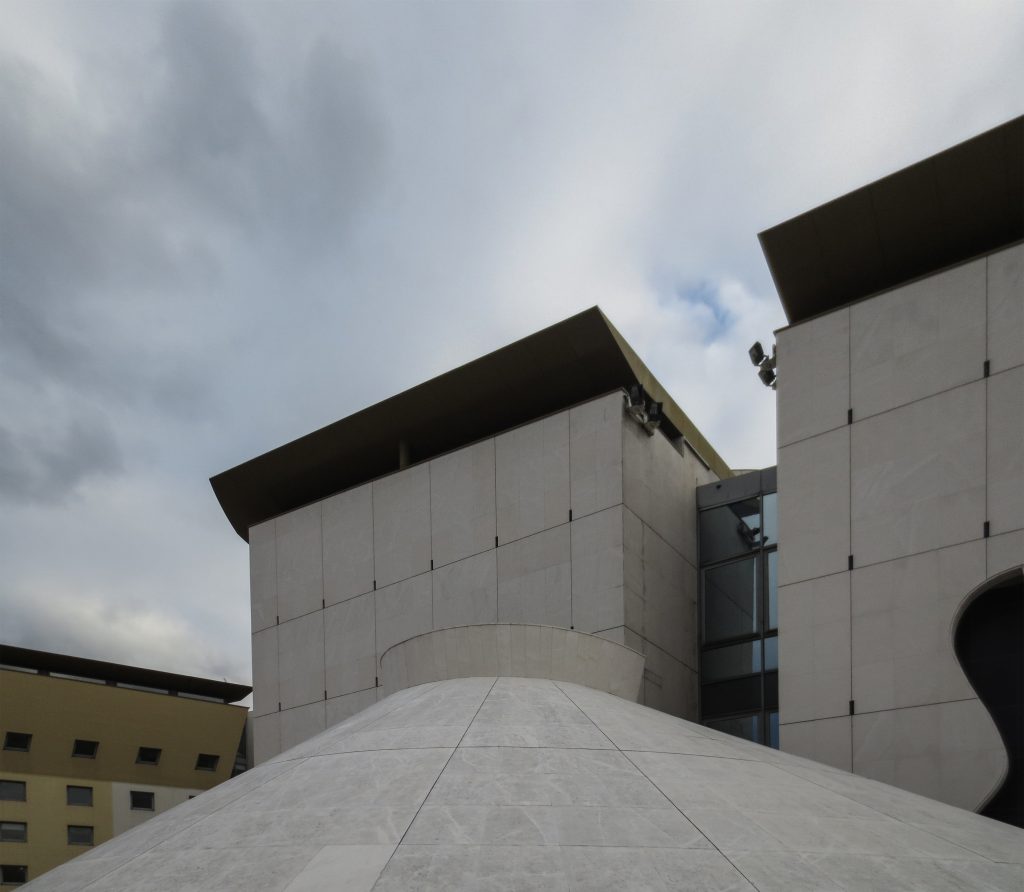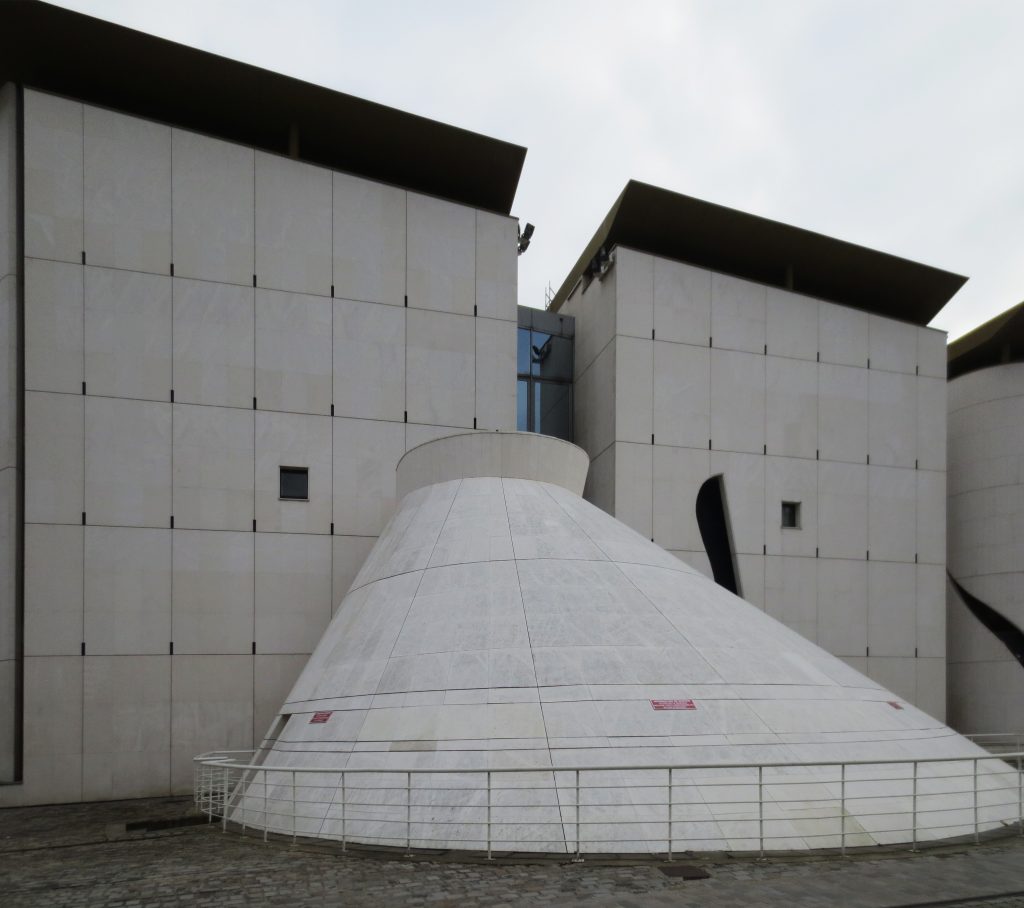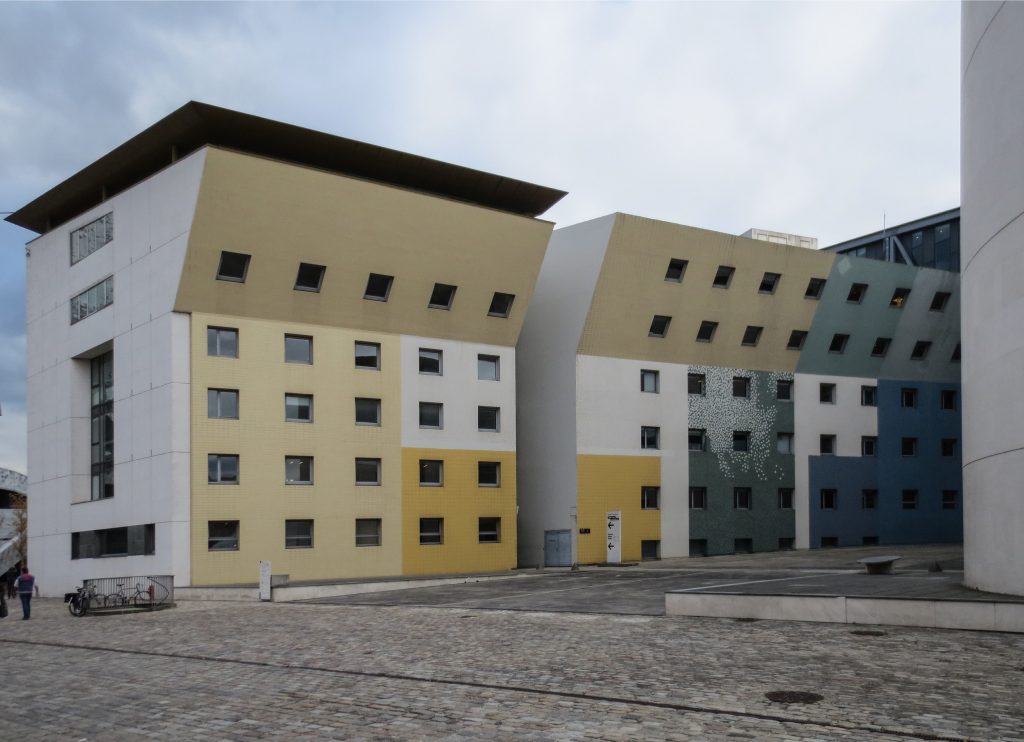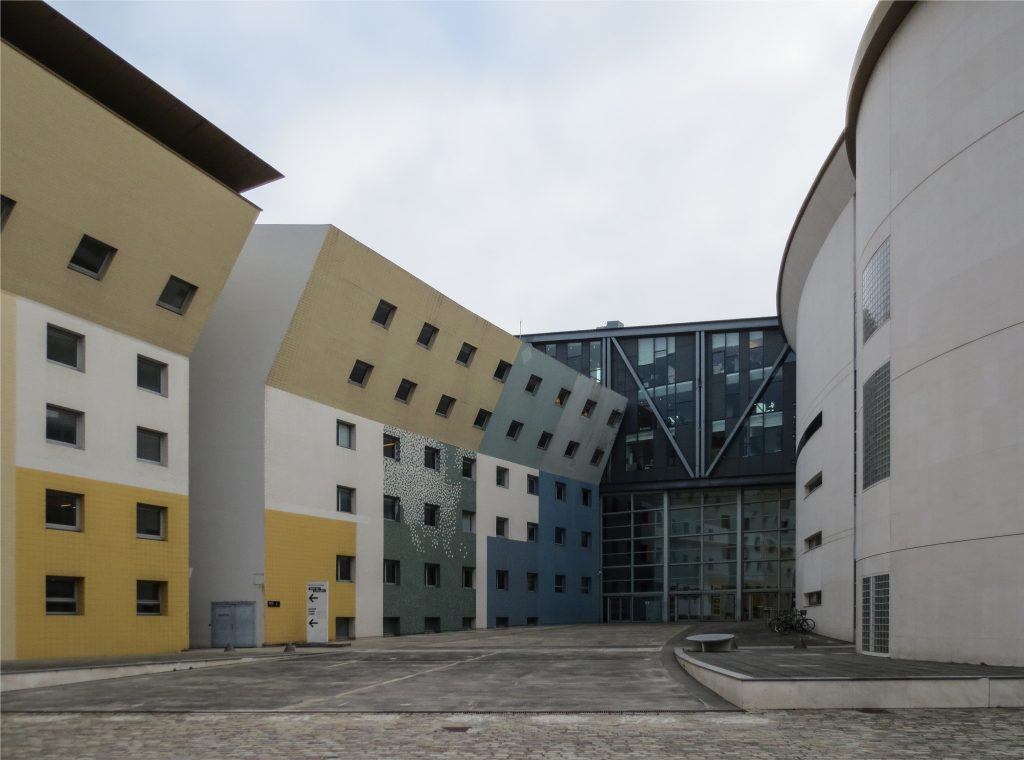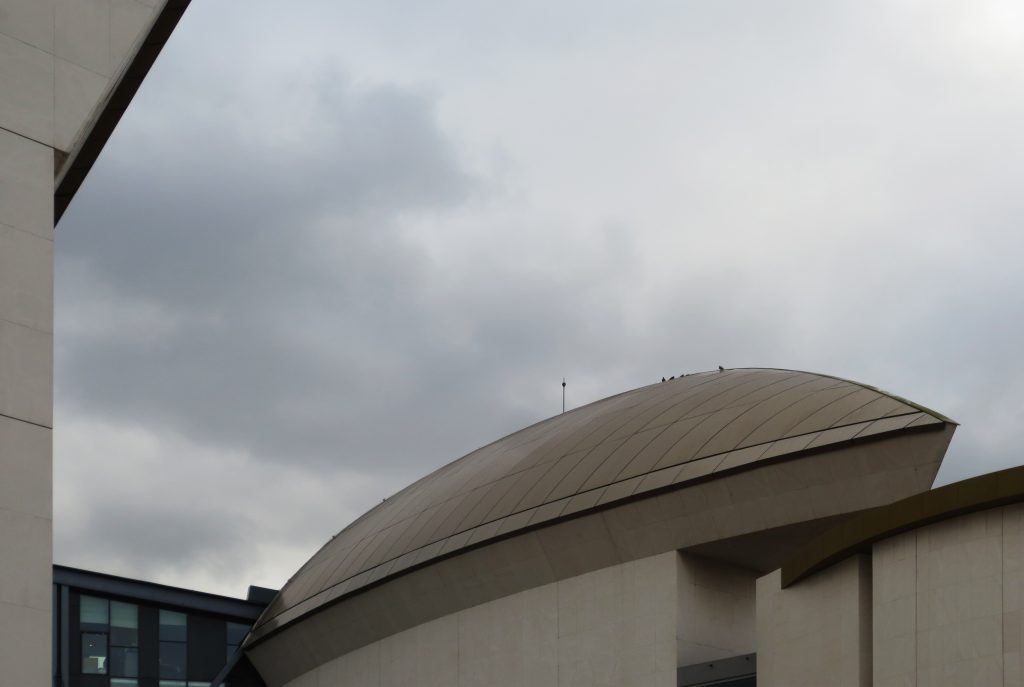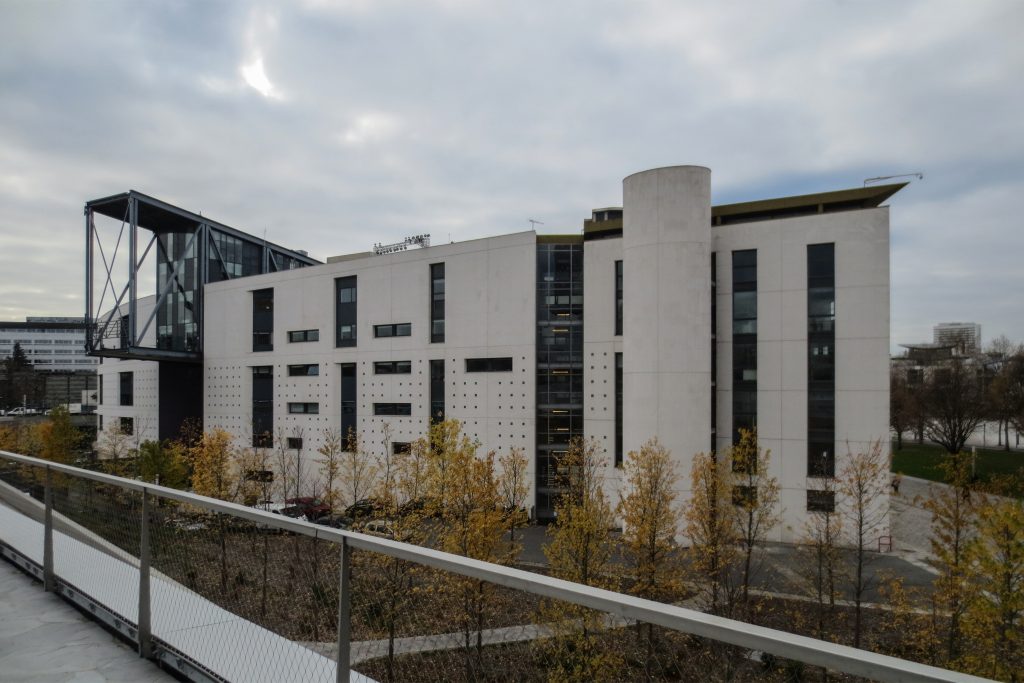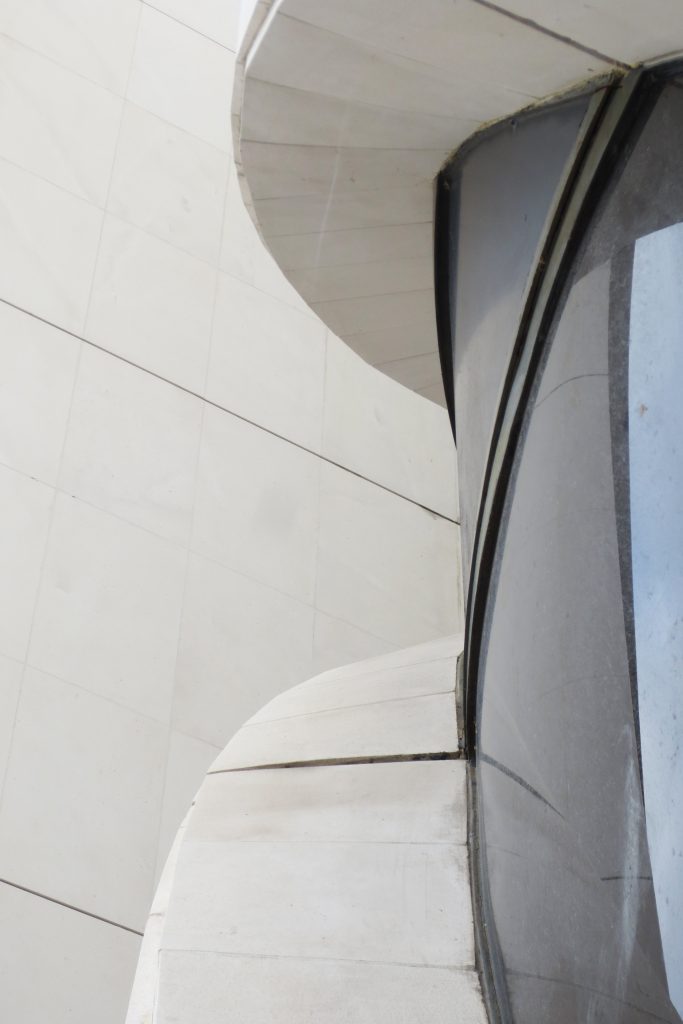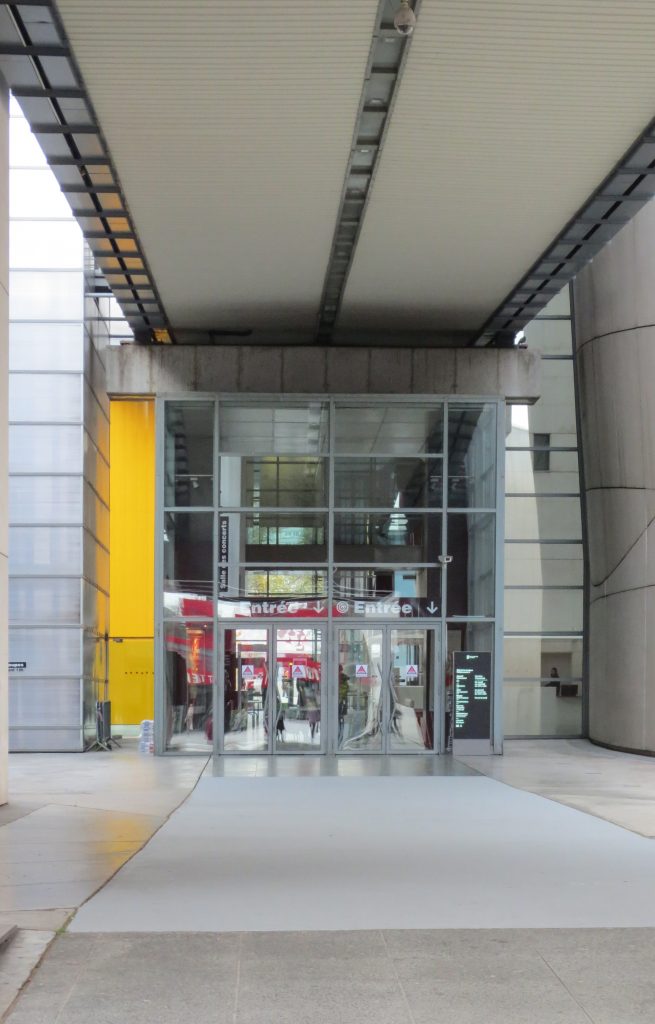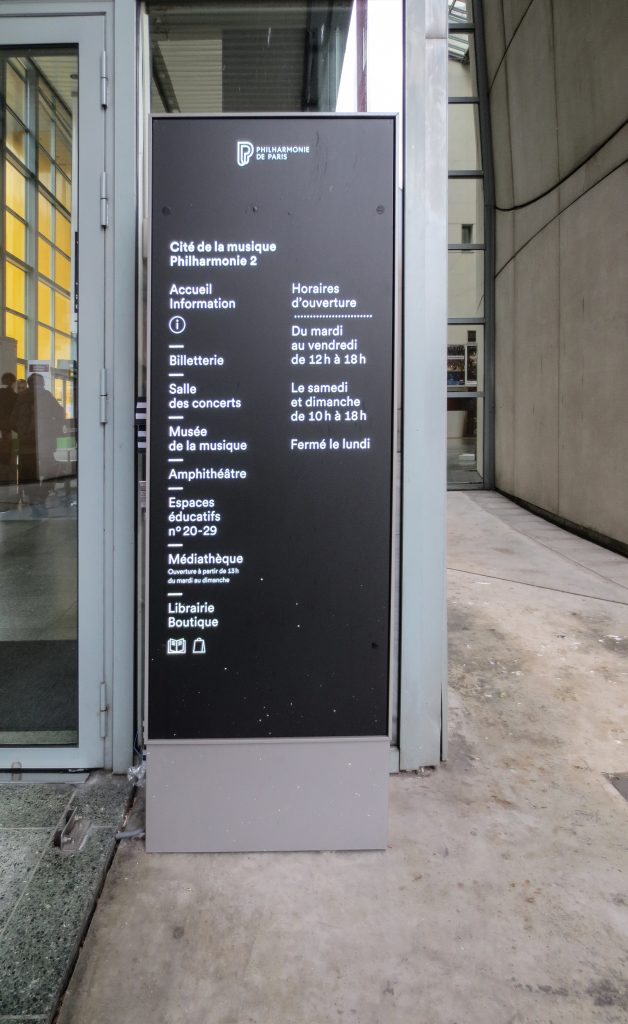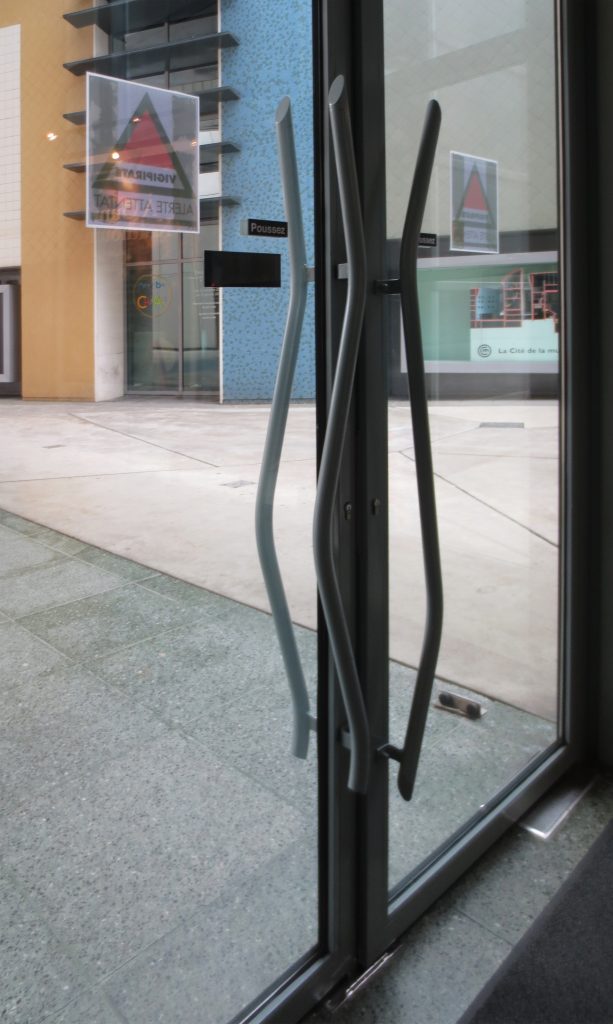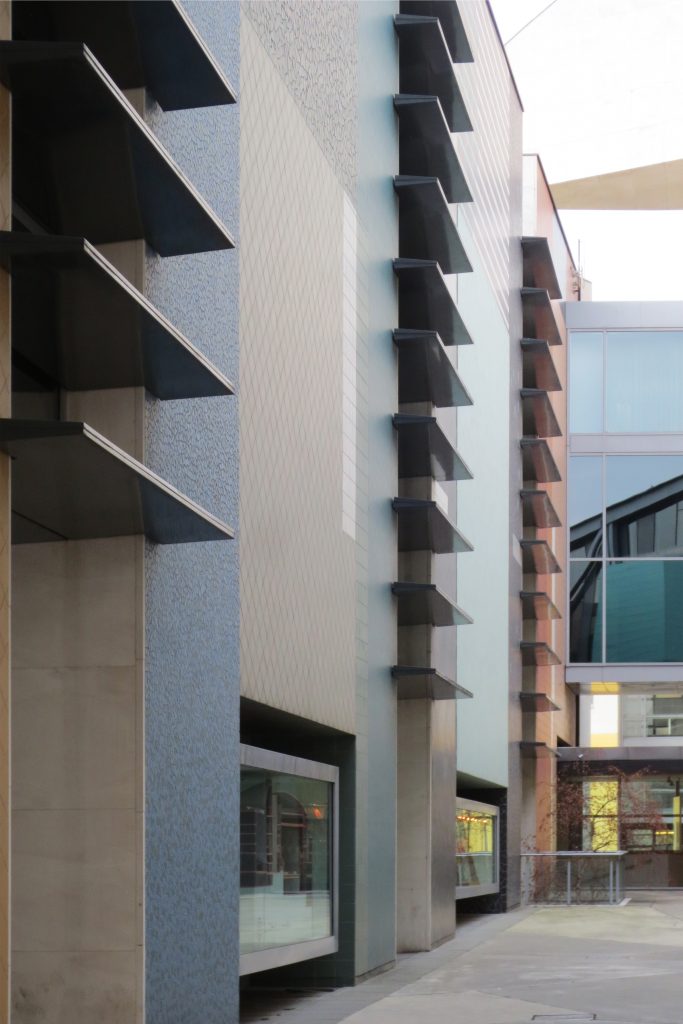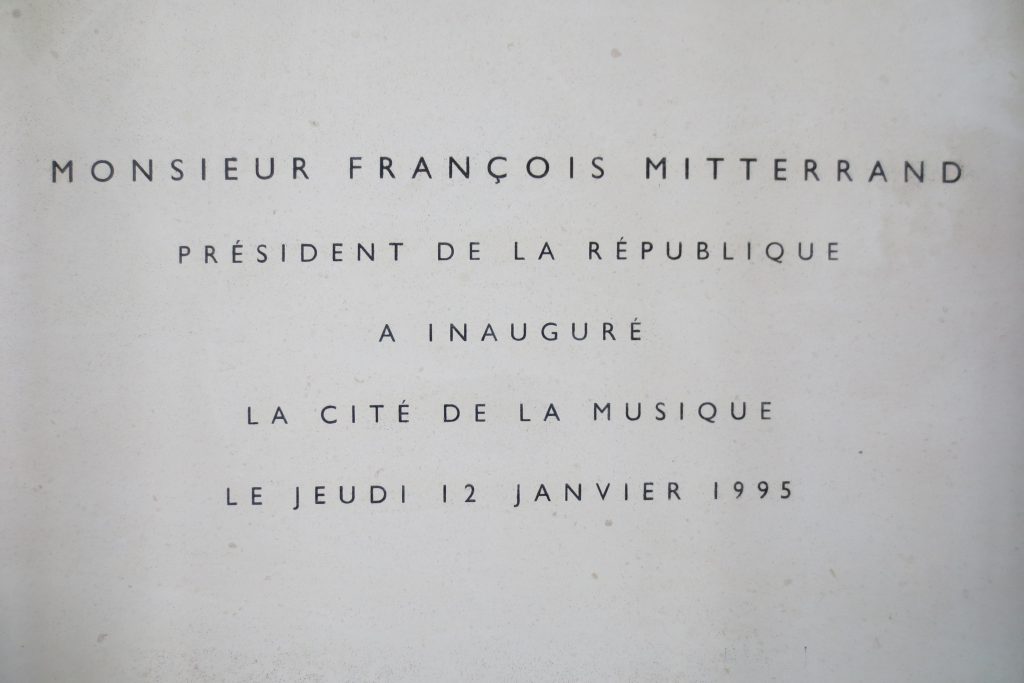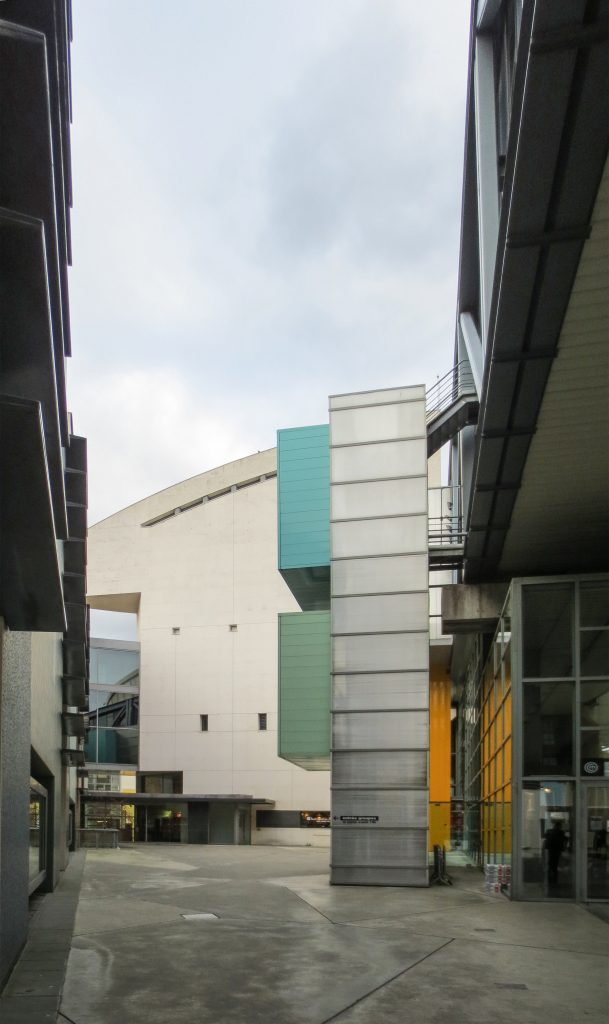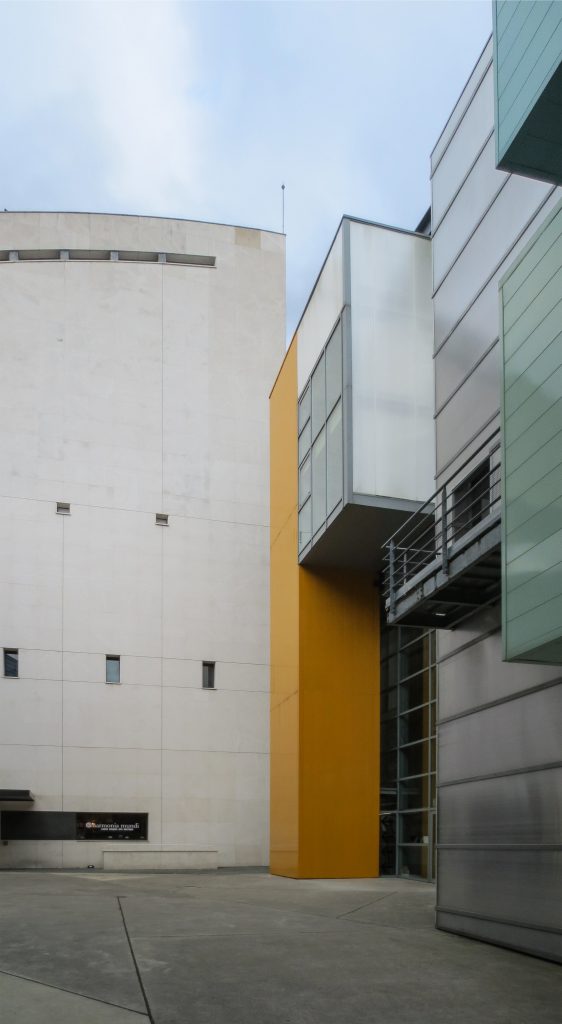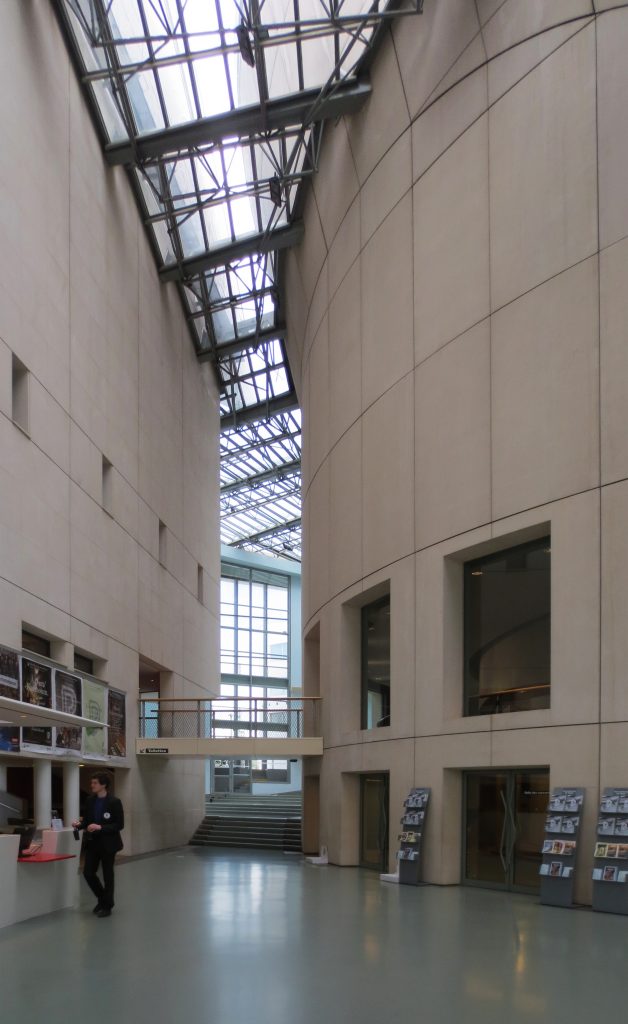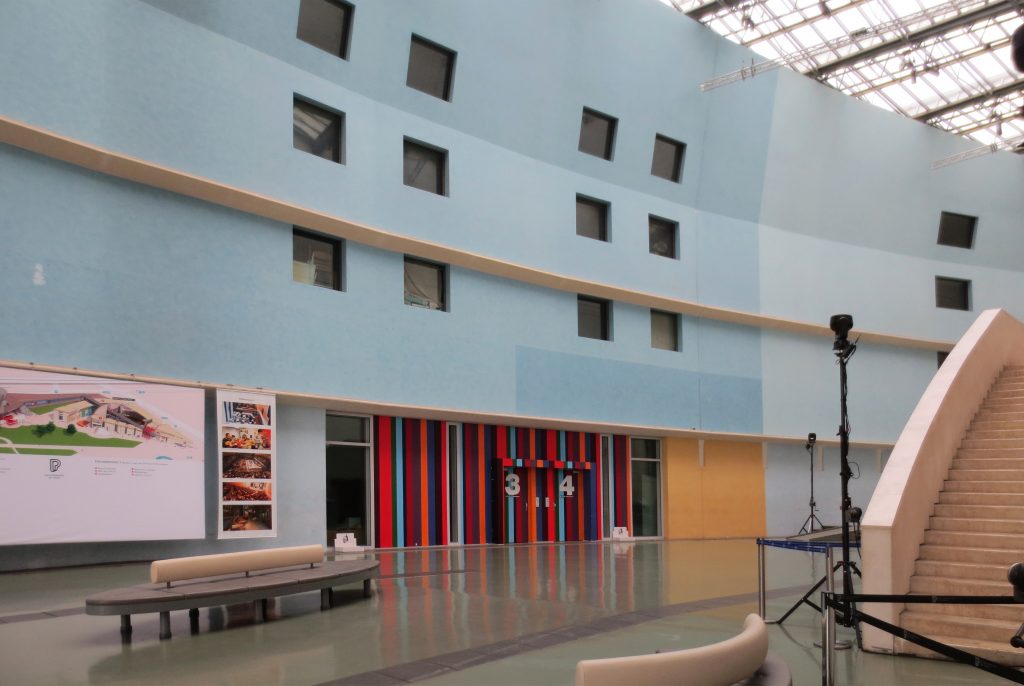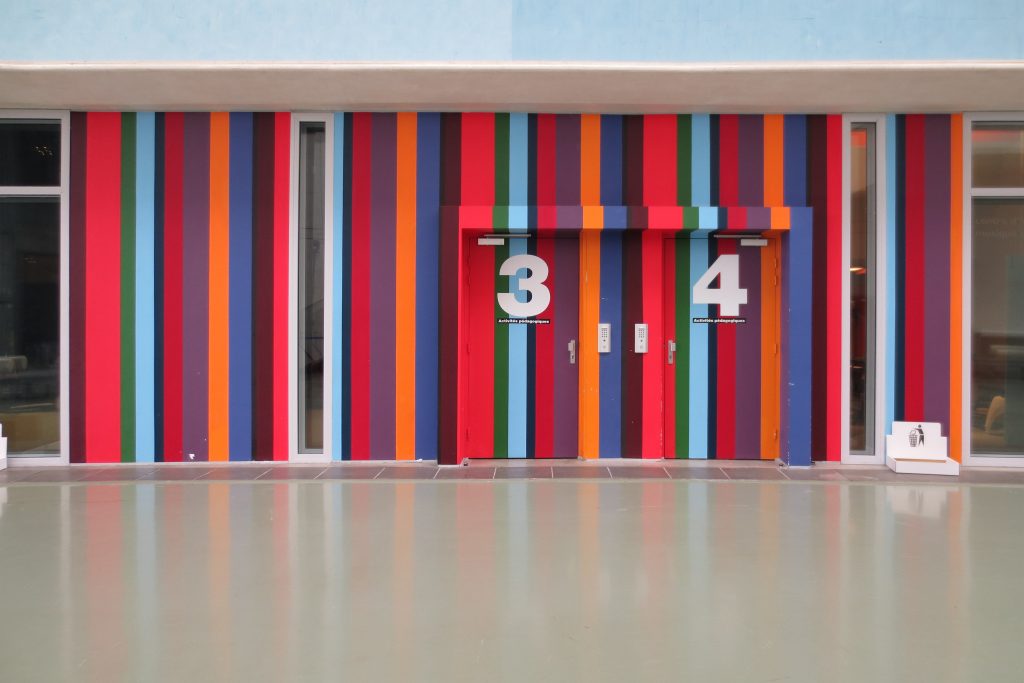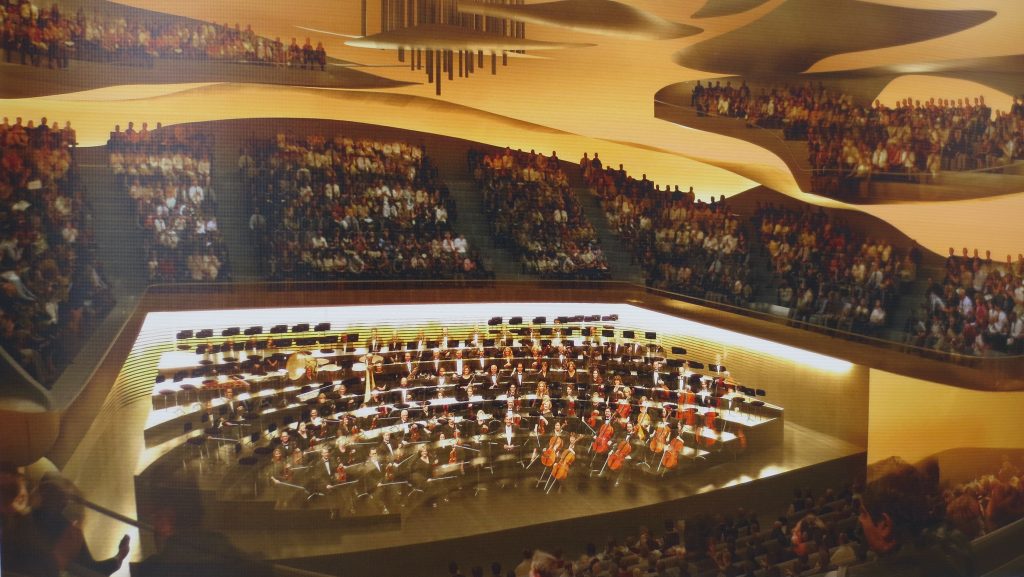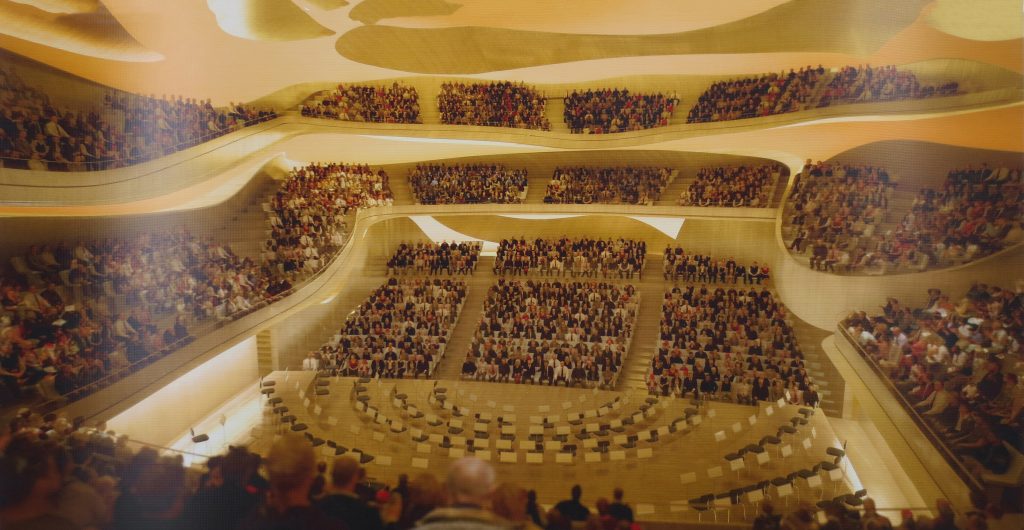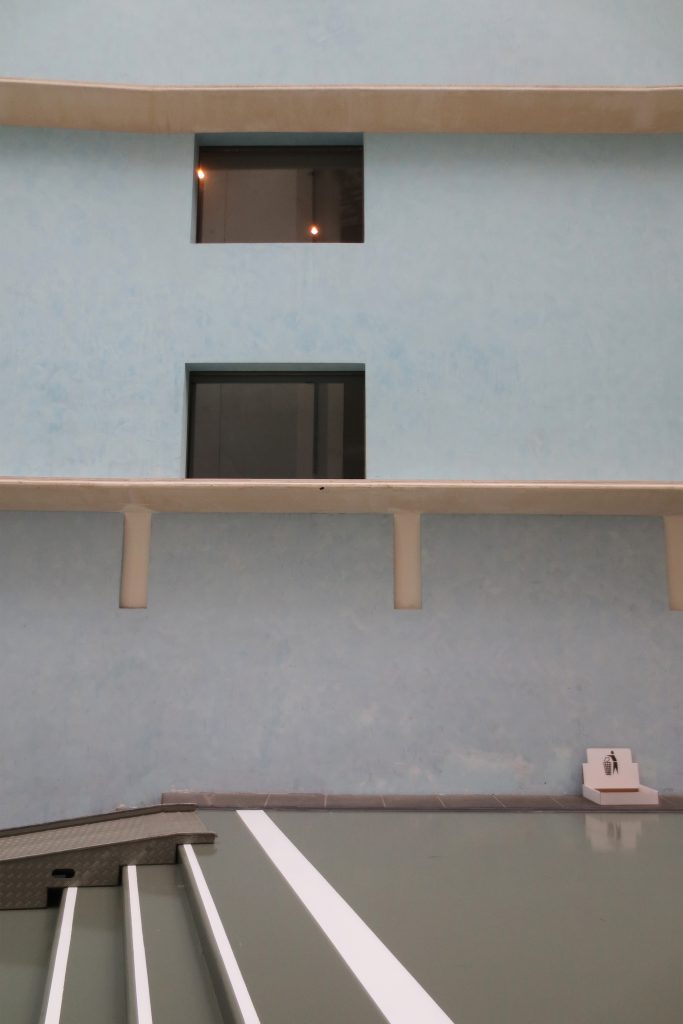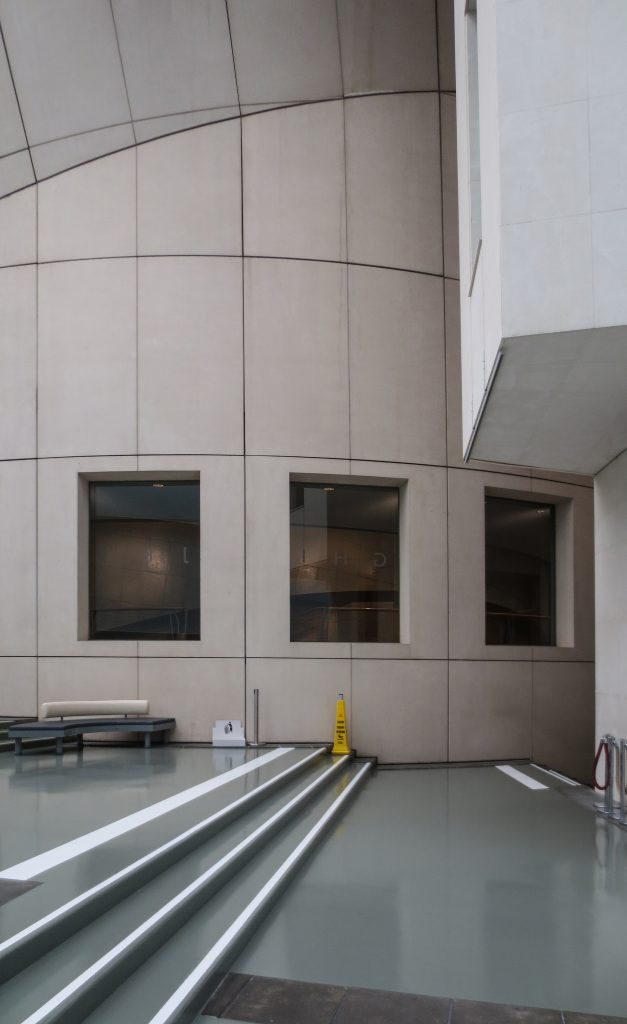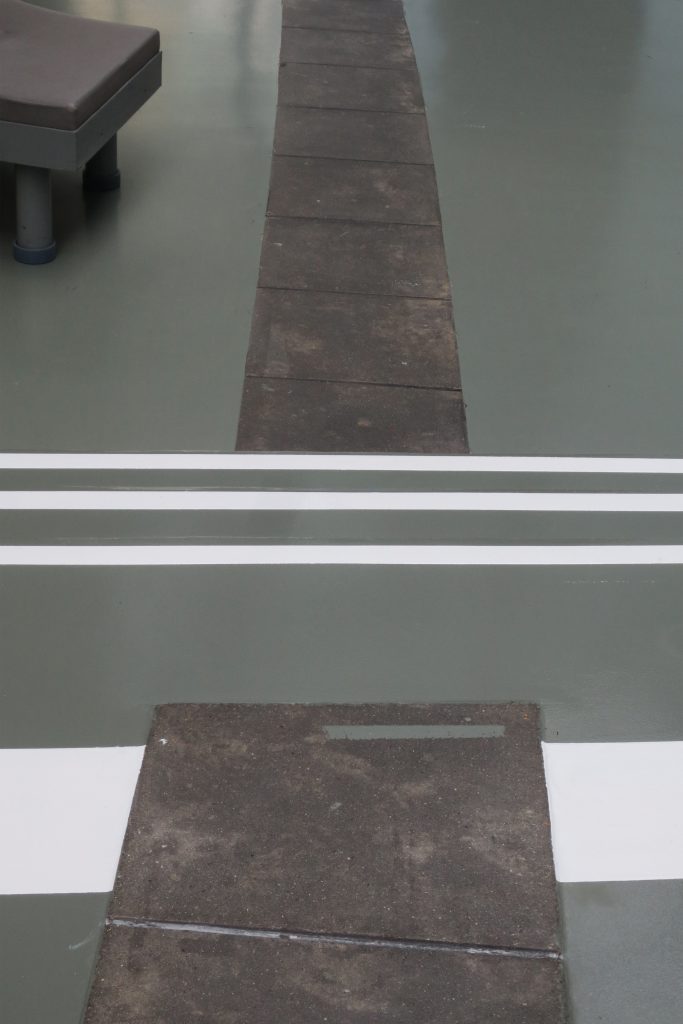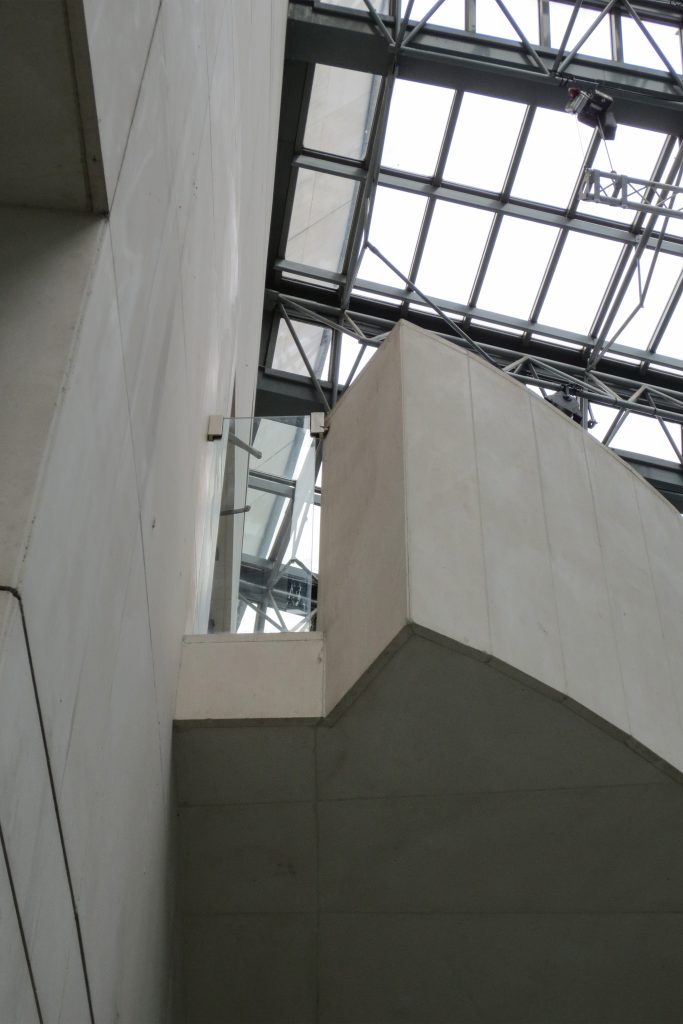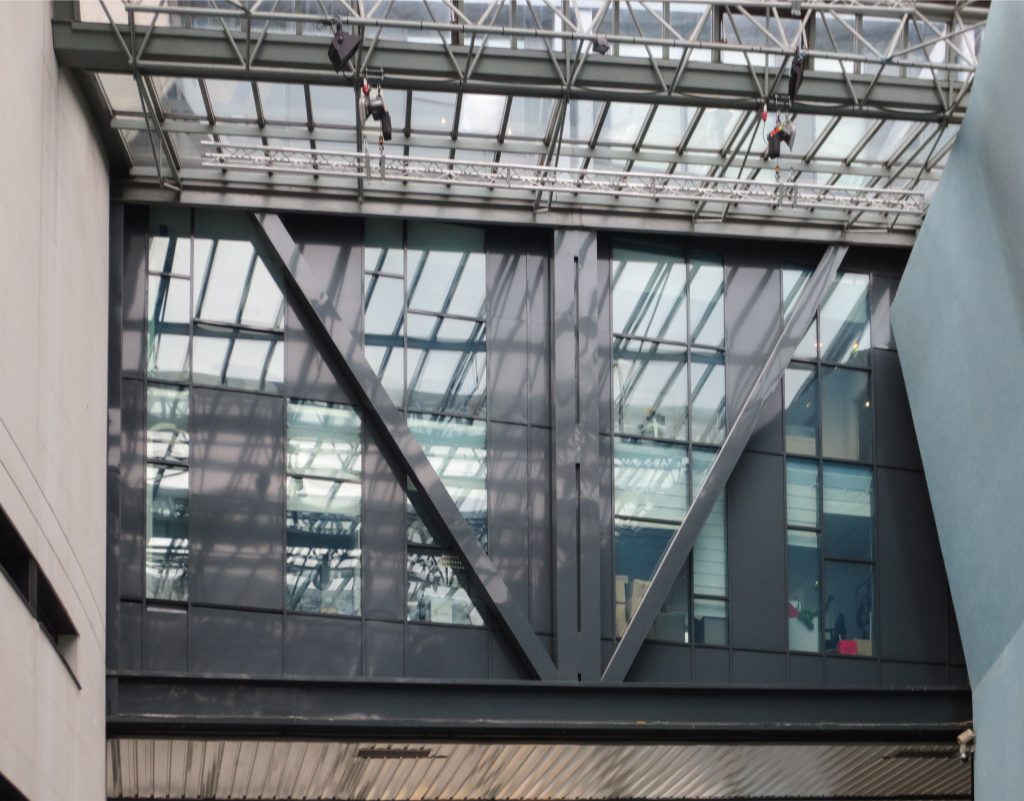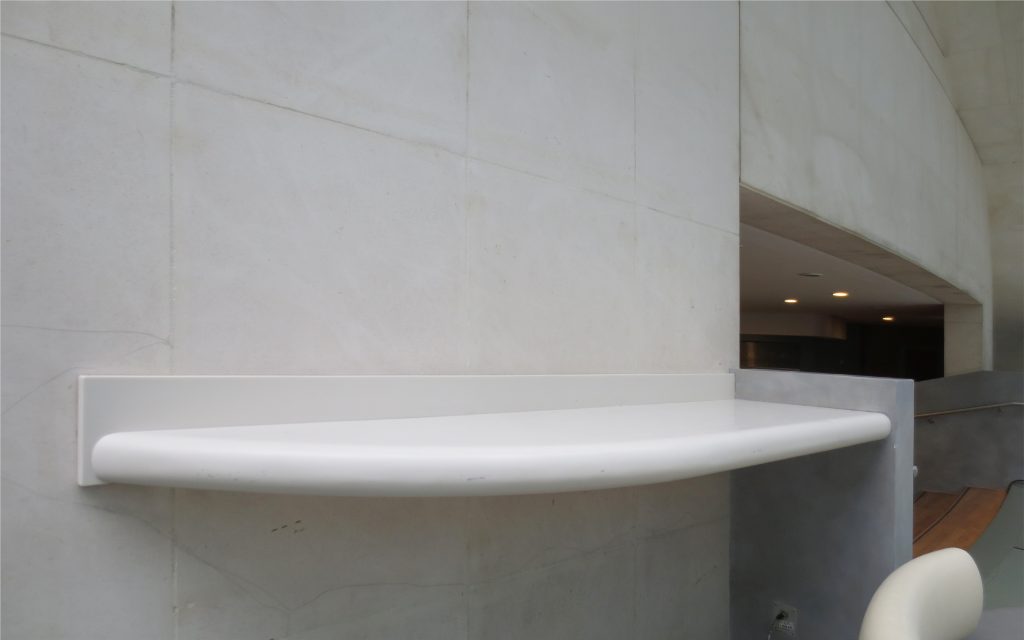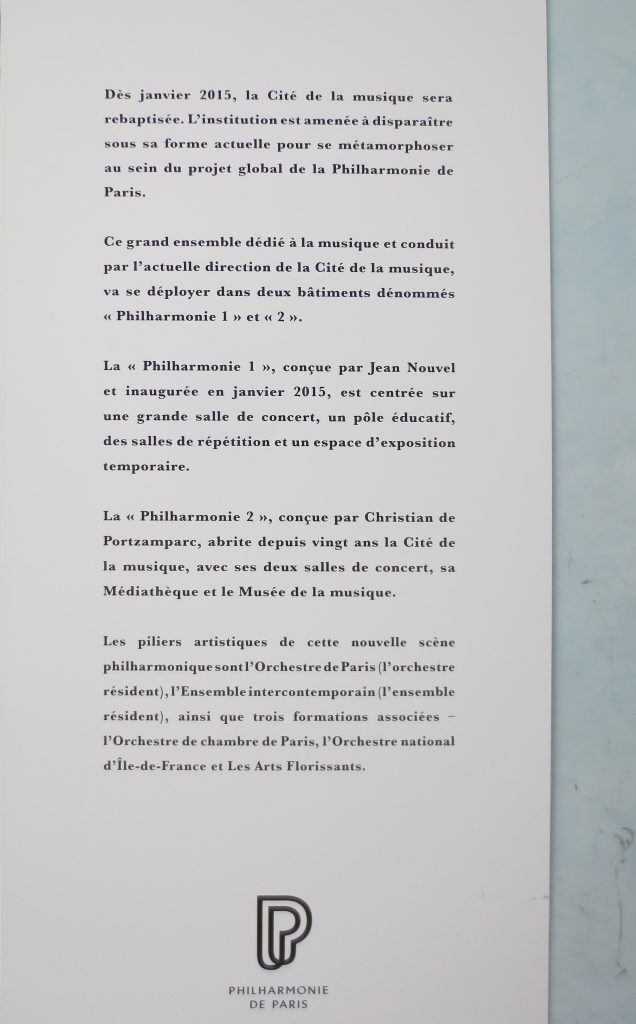Music City – Philharmonic 2

Introduction
The building known as Cité de la Musique (Music City) and renamed in 2015 as the Philharmonic 2 by the architect Christian de Portzamparc, was opened in 1995.
The inclusion of the Conservatory on the site occupied by the Villette is closely linked to the project to create a multicultural experimental site in the Music City. Decided by French President François Mitterrand in 1983, the project was commissioned the architect Christian de Portzamparc, who won the bidding for architecture in 1985 with the goal of creating open, light, designed to facilitate meetings spaces.
Situation
The Music City was built in the Parc de la Villet, urban intervention developed by architect Bernard Tschumi to revitalize the abandoned lands of the old slaughterhouse and meat market, at 211 Avenue Jean Jaures, 75019 Paris, France.
Of the 55 hectares occupying 33ha park are green areas. In the remaining area they have risen different “follies” color structures that offer numerous services and other avant – garde buildings as the Philharmonie de Paris work Jean Nouvel inaugurated in 2015 or the Music City Christian de Portzamparc.
Concept
The project arose from the desire to combine in one building the Paris Conservatoire and Museum of Musical Instruments, with its concert halls and rehearsal with all spaces required for computers for education and dissemination of music, which in once it was an excellent place for public events.
Portzamparc wanted to design a “dream city”, a cozy space to invite the open movement to the Grand Paris and serve as a meeting place. The result is a design inspired by seashells, with a street acaracolada organized building spaces. A large network of circulation and spaces where students can meet freely with its range of vertical and horizontal streets combine the Conservatory and the Music City, creating a single space at the service of rhythm and sounds.
Description
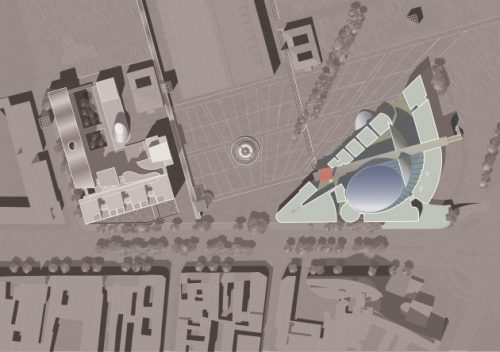
A Dream City
In front of the Conservatory, the building of the Music City breaks the landscape with multiple openings that testify to its interior spaces. The architect, in fact, wanted to explore outside a building, a little labyrinthine, musicians say it takes 15 days to orient themselves within the “city of dreams” that invites movement and encounters. Thus, the Music City combines several buildings within the same building and scattered small passages, stairs, quiet corners and other connection channels in a set of interconnected spaces that allow games of perspective and light multiply.
The composer and conductor Pierre Boulez emphasized the musical dimension with these words: … What I like about the City of Music, is that as we move away, everything changes. In fact, it is comparable to music… .
A building to go
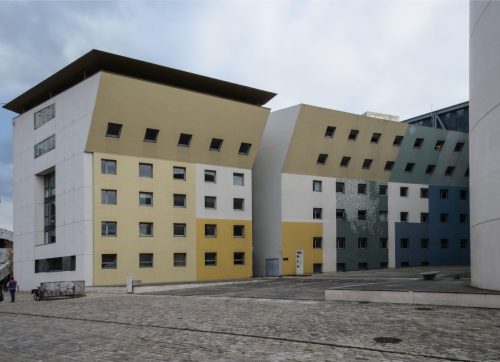
The different areas that make up the City of Music, concert halls, the Museum and its amphitheater, library and rehearsal rooms and areas reserved for administration, extending over a wide area behind a glass shaped shell, rue Musicale, which serves as the entrance hall, where all roads meet.
In the opinion of Christian de Portzamparc, architecture rhyme with movement: … I see (…) architecture as an invitation to life, that is to say, the movement. Not that architecture moves, or necessarily destabilizing, but the man moves. I do not see it as a static level, continues as the tracks. Architecture, such as music, perceives itself in time and according sequences, and pursued the idea that gives rhythm to the space, the practice of what some call the art of mounting inside the…
Spaces
The City of Music hosts within different areas, including:
West wing
Conservatoire de Paris
The West Wing, completed in 1990, houses the Paris Conservatoire. It can accommodate 1,200 students on an area of 34,000 sqm. More than 5,000 people work and teach in this building that seeks to provide a space for everyone, for each discipline, each “tribe” has its own accommodation, different rooms to study, set around a garden and a small opera house, a living organ and orchestra room multipurpose. It is a modern city monastery opens and complete the long sweep of the Jean-Jaures avenue with a large white facade and marked by regular and transparent forms reflected in a water mirror curve.
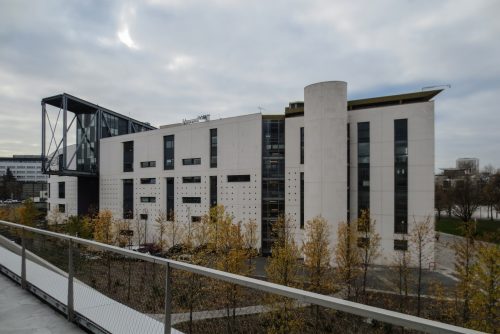
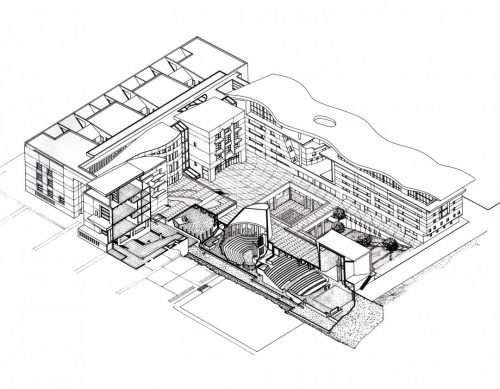
- Building
Christian de Portzamparc was raised to design a building that would allow the greatest possible antrada light and turn facilitate meetings between its members.
The building as a whole is divided into four blocks running north to south separated by corridors of light.
The rooms are arranged in acoustically isolated subsets, connected by places and open, well-lit, with fluid passages. This solution allows easy movement, while at the same time the specific sound insulation prevents some overlap.
- Program
Cultural and public facilities that hosts the Paris Conservatoire consists of 66 classrooms, three examination rooms and competition, 7 sets orchestra 1 electro-acoustic auditorium, 3 amphitheatres (50 seats), 100 rehearsal rooms, 3 auditoriums public (organ, singing, multidisciplinary), Media center, audiovisual center, 53 student housing units, gym, café-restaurant, offices, medical center and parking in an area of 34.000m2.
East wing
Eastern Music City, less tied to their urban environment, wing opens onto the park as a large triangle. Completed in 1995, it gathers all open to the public, in an area of 50,000 square meters space. It consists of a series of sections that form a “neighborhood” with different volumes around which the public can walk: concert halls, a museum of music, a center organología, amphitheater, the residence of students, an educational institute, a multimedia library, offices and the headquarters of the Ensemble Intercontemporain (French Chamber Orchestra), rehearsal rooms, music stores and Café de la Musique.
Each space is raised as an “object” with a special shape, like a puzzle assembled size creates a large triangular block crossed by the magnificent spiral gallery which extends from the lobby and wraps around the elliptical concert hall.
- Concert hall
The flagship room of the City of Music is the concert hall designed by Christian de Portzamparc so that it can be played in all styles of music. The room is called 2’s Philharmonie Concert Hall, after the opening of the controversial Philharmonie de Paris of Nouvel.

Pierre Boulez, known conductor and advisor in construction and modular wanted a rectangular room, Christian Portzamparc wanted elliptically. The Concert Hall of the Philharmonic 2 is a meeting of two ways. Its rectangular plan is open to many possible configurations; the seats are retractable and mobile like the escenanio that allows the installation of several tiers.
At the top level, balconies reveal the ellipsoidal shape of the room. These balconies are a multitude of small boxes, equipped with a lighting system that allows them to change color, and that also house small groups of seats. The room is surrounded by a gallery above the balconies. As Christian de Portzamparc emphasizes: … The elliptical shape of the Music City perceptive gives great wealth. Depending on the location, it may seem small or large, intimate or grand… .
This concert hall has become a benchmark for its acoustic qualities, exceptionally, relationships forged between the stage and the audience and crowded public spaces.
- Amphitheater
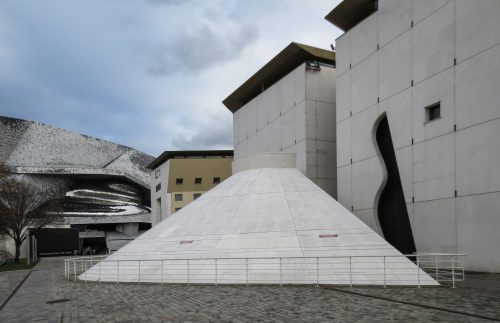
The amphitheater is the perfect space for chamber music concerts. Located underground has capacity for 250 people. With projection facilities it is suitable for both films pass to conferences.
Its Baroque organ, whose case was designed by Christian de Portzamprac and performed by Jean-François Dupont is regularly used by students at the Paris Conservatoire and during concerts.
It is accessible through a staircase and an elevator. The room accommodates five people in wheelchairs.
Music Museum of Paris
Conceived by architect Franck Hammoutène, the Museum of Music is a separate space within the City of Music, an intimate and proper place for dialogue between musical craftsmanship and musical practice.
Its 5 floors are accessible to all audiences and accessible for people with limited movilidd.
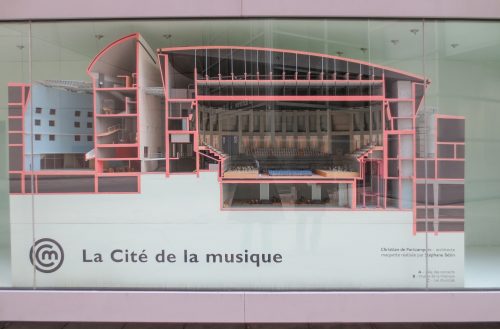
- Bookshop
Open to the Parc de la Villette, the library offers a quiet place for professionals, amateurs or curious musicians who want to read about music space. Originally conceived as a small bridge leading to the large auditorium, the library is located in the beam with red metal frame that crosses the building. Inaugurated in 2005 has an open and warm space, separated into different sections, facing the Parc de la Villette.
- educational spaces
In addition to educational spaces Philharmonic, the City of Music has two other surfaces that host educational workshops, one specifically dedicated to amplified music including a mixing studio and a sound booth, and the other dedicated to the practice of Javanese music.
Philharmonie de Paris
The Philharmonie de Paris is a cultural institution that combines spaces dedicated to music. It consists of concert halls, exhibition halls, rehearsal rooms, educational services, restaurants and bars. The main buildings are located in the Parc de la Villette, on the northeast edge of Paris in the nineteenth district.
